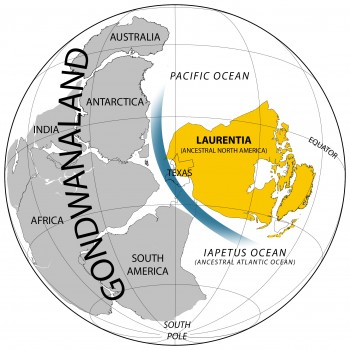‘Big Bang’ of Species May Be Explained by Continental Shift
November 11, 2014

A sudden explosion of new life-forms hundreds of millions of years ago may have been triggered by a major tectonic shift, new research shows.
About 530 million years ago, the Cambrian explosion brought a surge in new species to Earth, including most modern animal groups. Recent studies suggest that, during the Cambrian explosion, life evolved about five times faster than it’s evolving today. The sudden increase in species is sometimes referred to as “Darwin’s dilemma” because, at face value, it seems to contradict Charles Darwin’s theory of gradual evolution.
Huffington Post, November 19, 2014
Eos, November 18, 2014
ABC News, November 9, 2014
Live Science, November 7, 2014
Featuring: Ian Dalziel, research professor at the Institute for Geophysics and professor in the Department of Geological Sciences
